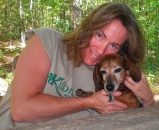 |
Dr. Susan Hoban's Homepage
Senior Research Scientist
Associate Director for Academics
Joint Center for Earth Systems Technology
Associate Affilate Professor of Physics
Honors College Fellow (2011-14)
University of Maryland, Baltimore County
5523 Research Park Drive
Suite 320
Baltimore, MD 21228
email: hoban -at- umbc.edu
|
Research Interest
 |
Principal Investigator: NASA's BEST Students
Beginning Engineering, Science and Technology
In collaboration with NASA, we have developed curriculum guides for engineering education from grades K-2, 3-5 and 6-8. We provide professional development for informal educators and teachers on the use of the Activity Guides, and we provide an introduction to engineering education.
Among other places, the NASA's BEST Activity Guides are in use as co-curricular, afterschool clubs in Anne Arundel County Public Schools in Maryland, and in the Beyond the Bell program in the Los Angeles Unified School District in California.
NASA needs engineers, and kids are natural explorers. NASA's BEST Students encourages students of all ages to engage in engineering and exploration activities.
Please visit the NASA's BEST Students Homepage on the NASA Portal!
|
|
Coordinator: NASA's Planetary Data System, Student Investigators
The objective of this initiative is to involve undergraduate students in research and development projects related to the holdings of NASA's Planetary Data System (PDS). Through the PDS Student Investigators, the PDS strives to prepare the next generation of PDS science investigators.
The PDS includes nodes operated by university/research center science teams and the Jet Propulsion Laboratory (Atmospheres, Geosciences, Planetary Imaging, Planetary Plasma Interactions, Rings, Small Bodies, and Engineering). These nodes specialize in specific areas of planetary data. The contributions from these nodes provide a data-rich source for scientists, researchers and developers. PDS Student Investigators conduct a research using data from one of the nodes. They are funded for two years, typically their junior and senior years, and the PDS supports travel to one professional meeting to present the results of their research. |
 |
Courses I am teaching in academic year 2014-15:
| Summer | | UMBC PHYS 112: Basic Physics II, Second semester Basic Physics for non-physics majors. |
| Fall | | UMBC HONR 300: Robots in Society, a writing-intensive course investigating technical and social aspects of robotics. |
Courses I have taught:
2014: UMBC First Year Seminar FYS102, Transformational Technologies, a course for incoming students that explores technologies that have had major impacts on societies over the years.
2011-14: UMBC HONR 300: Robots in Society, a writing-intensive course investigating technical and social aspects of robotics.
2011-12: Bradley University: BIO 570, Remote Sensing for Earth Science, an introduction to remote sensing for educators [Part I: Fundamentals of Remote Sensing; Part II: Research project using the data from the Hyperion instrument aboard the Earth Observing 1 satellite.]
2010: Bradley University MST 670: Teaching Science using Robotics - a course for educators to introduce them to using robotics as an instrument to teach science, technology, engineering and math (STEM).
2005-07: UMBC SCI 510: Fundamentals of Lunar Robotics - a course for educators to introduce them to using robotics as an instrument to teach science, technology, engineering and math (STEM).
1993 - 99: University of Maryland College Park
ASTR 100: General Astronomy, a survey course for undergraduates
ASTR 360: Solar System Astronomy--a study of the formation and evolution of the planets, satellites and small bodies in the Solar System
1992, 1996: University of Maryland University College
100: General Astronomy, a survey course for undergraduates
ASTR 380: Life in the Universe - a study of the astronomical and technological considerations and implications of searching for life in the universe.
| In memorium, Dinky Dox: smallness of stature, largeness of heart. |
 |
| In memorium, Casey the Dog: ran over 5,000 miles with his human. |
 |
Updated, June 27, 2014, -sh





